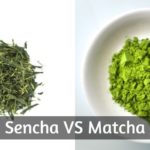When brewing green tea, you might struggle with its taste. Sometimes, you'll just want to make green tea taste better.
I'm right there with you. Pure green tea is too harsh for me, so I always look for ways to tone it down, and add different flavors.
So I'll help you make your cup of tea taste better, and also go over the prerequisites to making a decent cup of green tea in the first place.

Table of Contents
How to flavor your green tea so it tastes better
Green tea is famous for turning bitter if you look at it wrong. It's honestly one of the most frustrating teas to brew, and I always set a timer on my phone for exactly 2 minutes when I make a cup.
The rewards are well worth it though, as green tea has some great health benefits that will help you down the line.
But it only works if you drink it regularly.
Which you can't really do if your green tea tastes horrible.
So, mastering how to brew the right cup of tea for your tastes is going to be very important, and I'm going to help you with that.
First, let's start with flavorings, and what you can add to your cup of green tea to make it better.
1. Add honey and a twist of lemon to freshen green tea
The first thing that would come to mind when trying to make green tea taste better is to sweeten it.
Not the worst idea, but you do lose a few health benefits by doing so.
Better to go easy with the sugar, or better yet trade sugar for honey.
Honey is sweet too, but it at least has several antibacterial and anti inflammatory properties that will only boost your green tea's benefits.
So adding honey to green tea is a great way to sweeten the drink, and get a few more health benefits.
Just make sure that when you do add it, the tea is warm, not hot.
If you can comfortably hold the teacup in your hands without it being too hot, then it would be safe to add the honey.
If the tea's over 40 C/104 F then the honey will lose its healing properties and do none of the things it was meant to do.
As for the lemon twist, that will help improve the green teas flavor as well.
When you take the slice of lemon and actually twist it, you release some of the lemon oil, which will flavor the tea and cover the harsher green tea tones.
Lemon juice isn't the best idea, as it can make everything a bit too acidic. But twisting a half slice of lemon and letting it float nicely on top of the tea will improve the taste.
If you couple the lemon with the honey, then you'll get and even better flavor.
The resulting cup of tea will taste very refreshing and you might just want another one right after.
2. Flower petals will work great to soften green tea's flavor
Of lemon or honey aren't your thing, then maybe flower petals will do the trick for you.
Now not all flowers will work with green tea, but many of them do.
For example jasmine is a wonderful pairing for green tea, and it's one of the most common blends of green tea you can find on the market.
Rose buds or petals will also bring lots of flavor to the green tea, but you have to be prepared for the strong aroma they bring.
The heat from the tea will make the rose scent even stronger, so make sure you're okay with roses before you add them to your tea.
Lavender is another flower that's going to go very well with green tea, though this one is a strong scent as well.
It's the kind of taste that will almost completely erase the green tea flavor from your mind, and bring forth the balmy lavender.
Chamomile is another flower that would go well enough with green tea, and serve to round out its edge.
The fact that chamomile is great for relaxation and stress relief is going to work well with the L-theanine in green tea.
L-theanine is responsible for the calming effects that tea has on people, since it's a sort of relaxant.
Peonies are also a great option for flavoring your green tea, since they're so fragrant, but also edible.
It's also anti inflammatory and prevents blood clotting, so you're only adding to the benefits of green tea.
There are other blooms out there that could be added to your green tea to mask some of its flavor, but these are the most common ones.
3. Add peppermint for refreshing green tea
Adding peppermint to green tea isn't a new thing, it's actually a classic way to flavor green tea.
This is especially true in hotter countries, that could do very well with a refreshing and cooling drink.
The most famous mint is the Moroccan mint, with is actually peppermint.
It helps to reduce inflammation, and improves focus.
This will help immensely when you're drinking peppermint and green tea.
Green tea contains caffeine and L-theanine which combine to form the perfect focus assistant.
Caffeine works to keep you awake and aware of everything around you, alert and focused.
L-theanine will take the edge off caffeine, and also relax you. So you'll be focused but calm, which is going to work very well with the extra help from the peppermint.
Peppermint's been known to reduce nausea, and will help you stay focused and awake as long as you need to.
When adding peppermint, you can just add a few leaves along with the green tea.
However since peppermint takes a bit longer to steep fully, I recommend you add more leaves that you would for a herbal tea.
This way you're getting enough flavor from the peppermint in the 2 minutes you let the green tea steep.
Another option is to use peppermint essential oil.
I own a small bottle, and I've had it for almost 2 years now. Please make sure you only add the tiniest amount to your green tea.
Really, all you need it to just rub a small part of the teaspoon on the opening of the bottle, where here is a bit of essential oil.
I once added a full drop to two liters/0.5 gallon of tea and it was almost too much. I've been very careful since then.
Peppermint in green tea will also go very well with the lemon twist I mentioned earlier.
(If you like this article so far, you can pin it to your Pinterest board by clicking the image below. The article continues after the image.)
4. Use dried fruit to flavor green tea, especially iced
Another way to flavor your green tea is to add dried fruits to the tea, which will release their flavor.
Which fruits you choose to use is completely up to you.
There are some that I think work better, and some that work a little less.
For example I think very yellow/orange fruits go great with green tea.
Fruits like mango, pineapple, peach, papaya, are all going to mellow out the harsh tones in green tea, and kind of distract you from the bitterness waiting just beyond the edge.
Conversely, very perfumed fruits like forest fruits (strawberry, cranberry, raspberry, blackberry, etc) are going to make your green tea smell wonderful.
The smell will again distract you from the bitterness and harshness, but the taste will not be as potent as the yellow/orange fruits I mentioned before.
This is simply because of how each fruit's flavor reacts to heat.
Another option is to add citrus peels. Not the fruits themselves, as they have no business ever being in a hot beverage.
So orange peel, lemon peel, grapefruit peel, and any other citrus you would like to add, are all going to help lift green tea's taste.
Just remember that citrus oil can quickly become overpowering and taste harsh on the tongue. So don't overdo it.
You don't need to add a whole orange's peel to one cup of tea.
My personal favorite green tea is a blend that contains pineapple and papaya, and I think it's the tea that's going to make me happy on any day.
Whichever option you choose, you can either use the candied version - which is going to save you the trouble of sweetening your drink - and add it as the tea steeps.
Two minutes should be enough for the fruits to release their aroma. If not, you might need to add more fruits until you get what you're looking for.
5. Ginger is a long-standing friend of green tea
Finally, we come to ginger. This is an old friend of green tea, and originates from the same place as well.
Green tea, and tea in general, has its birthplace in Southeast Asia.
Ginger happens to be a very common root in that area, and people have been using it for is medicinal purposes for thousands of years.
This includes adding cut up ginger root to green tea, as it will imbue the tea with its health benefits.
Ginger will also make the green tea smell wonderful, like a cross between a lemon and custard.
It's one of my favorite scents, actually.
Now, getting a hold of ginger root is not very hard. It's brewing it that's going to be a bit tricky.
As with peppermint, you will need to add a bit more than for a herbal tea.
You can't let green tea steep for more than 3 minutes, though I recommend only leaving it for two.
Two-three minutes isn't enough for ginger to fully release its flavor.
So I recommend adding ginger to the tea water as it boils, then stopping the heat.
After the water's cooled down to 80 C/176 F, you can then add the green tea leaves.
This means your tea water is going to be infused with ginger before you add the leaves, and you're giving it two extra minutes to boost the flavor.
Take note that dried ginger will take a bit longer to steep than fresh ginger. If your ginger is good quality, it will be a bit spicy, and the more you add the spicier it will get.
How to make sure your green tea doesn't taste bad
Alright, now that we're clear on how we can make green tea better, let's see what we can do to make sure the cup of tea we brew will be decent.
Many people brew their tea very poorly, and I used to be one of those people, especially in college.
I had no real concept of steeping time, water temperature, and loose leaves vs teabags and quality and such things.
Now let's take care of some mistakes that can be made when brewing green tea.
1. Pay attention to water temperature and steeping time
Water temperature is very important when brewing green tea. It's important when brewing any tea, but especially so with green tea.
It's a very delicate tea, and will turn bitter and brown if done wrong.
The optimal temperature to brew green tea is 80 C/176 F.
You can make sure you've reached the right temperature by using a food-safe thermometer, or by letting the boiled water sit for 2-3 minutes before you add the tea.
Once you've added the tea, especially if you're using loose leaves, only let it sit for 2 minutes, possibly 3 if you know that particular tea brews slower.
This will ensure your tea doesn't become overextracted, which is what makes green tea bitter.
Brewing green tea is a bit fussy, and you should seriously consider using a timer. But there is a way around that.
Try cold brewing your green tea for a better taste
Cold brewing green tea will remove the bitterness from the equation, and you'll be much more tempted to drink it.
Cold brewing tea takes a whole lot longer than hot brewing. You will need anywhere between 6 to 16 hours, depending on the level of flavor you want your tea to be at.
This is a nice cheat for summer, and you can of course brew it for an iced tea. Add a bit of fresh lemon to the brew when its done and some ice cubes, and you'll be ready to serve the whole family.
The greatest thing about cold brewing green tea is that you won't get bitterness, and you're also getting more nuances in your brew than with hot tea.
You might not even feel the need to flavor your green tea with anything else.
3. Don't be tempted to add any kind of milk to green tea
Another mistake I've seen, and done myself, is to add milk to green tea.
You'd think adding milk to green tea works like it does with black tea.
The thing is, green tea is much too grassy and astringent to properly take milk. Even nut or plant milk interferes with the taste too much, and as such isn't a good choice either.
So I recommend you set aside that green tea latte and look for other alternatives.
Final thoughts
I hope you found out just how to flavor your green tea so you like it, and the main things to avoid when brewing green tea.
Brewing the tea right is where most of the problems reside for people who don't like green tea.
However sometimes the taste of pure green tea is simply too much, and we need to find a way to smooth it out. I think the options you found here are going to help.
If you want to know more about coffee or tea, feel free to check the related articles below. Who knows what else you might find ?





